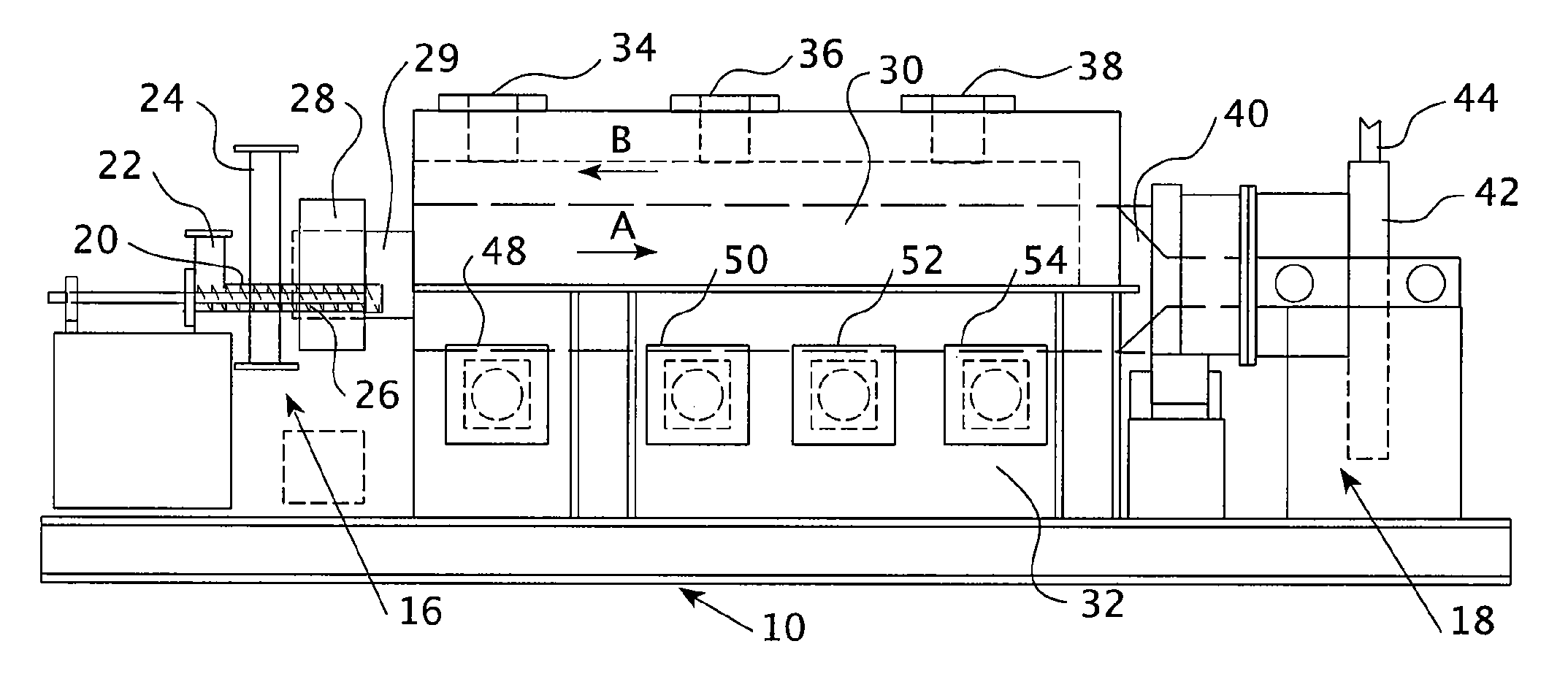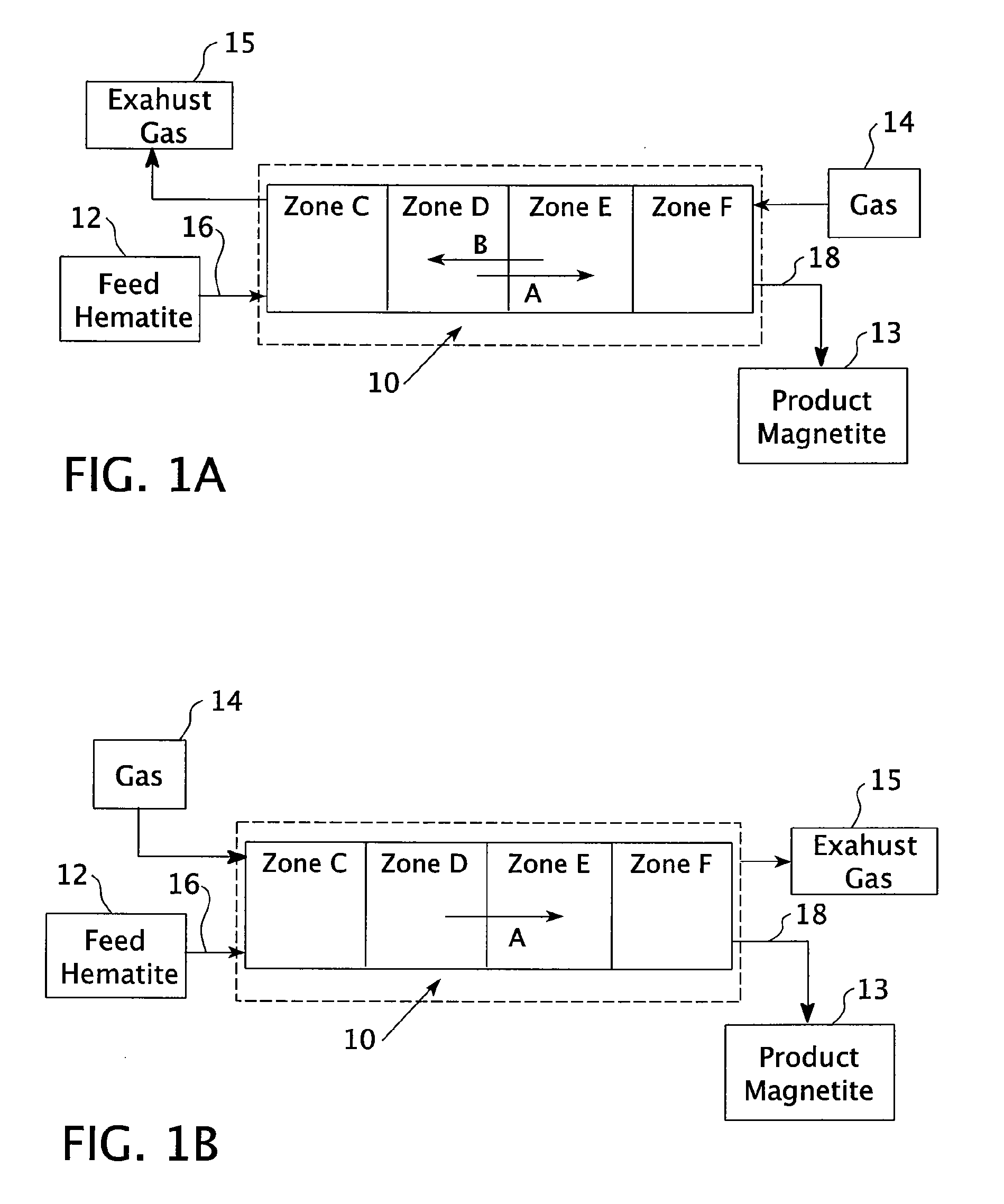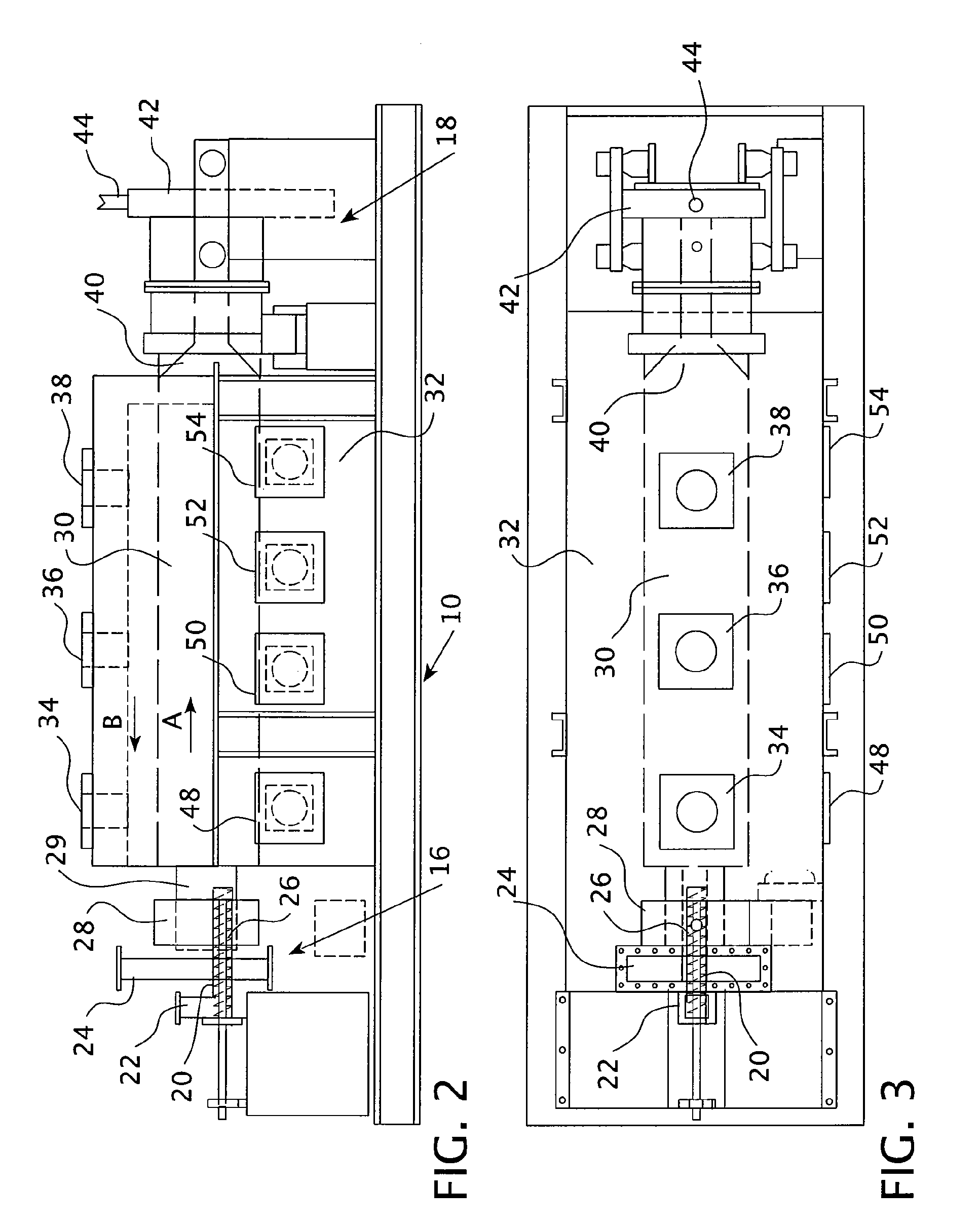High Purity Magnetite Formation Process and Apparatus, and Product Thereof
a high-purity magnetite, production process technology, applied in the direction of process and machine control, liquid-gas reaction process, chemical/physical process, etc., can solve the problems of difficult production on a commercial scale, no guidance, flow rate or purity, etc., to achieve simple guidelines, high-purity magnetite
- Summary
- Abstract
- Description
- Claims
- Application Information
AI Technical Summary
Benefits of technology
Problems solved by technology
Method used
Image
Examples
example 1
[0073]The results of small scale test runs are shown in Table 1. Hematite was fed into a kiln at a rate of 17 pounds per hour. As shown in test runs 1-26 of Table 1, gas was fed into the kiln counter-current to the hematite at a range between 0.071 to 0.223 scfm. The temperature of temperature zone D of the kiln was varied from 700-830° C. The methane was diluted such that 14-50% by volume of the outlet gas was methane. The table shows analysis of the purity of final magnetite products of the process after runs 10, 22, 24, 25, and 26. The “Red / Brown” designation indicates that analysis of the resultant product was performed by visual characterization, red=hematite, black=magnetite, red / brown=a mixture.
TABLE 1Summary of Process Conditions / Changes / ResultsCH4 Flow,CH4,Zone D,Run(scfm)(%)(° C.)Product Purity10.07114700NA20.07123720Red / Brown30.10921720Red / Brown40.10927720Red / Brown50.10930740Red / Brown60.10929740Red / Brown70.10930740Red / Brown80.10928740Red / Brown90.10927740Red / Brown100.10927...
example 2
[0076]A kiln was heated such that the maximum temperature of the kiln was 750° C. About 100 kmol of hematite (Fe2O3), or 15,969 kg of hematite, was conveyed into the entry point of the kiln for movement therethrough. Gas was added to the kiln in counter-current flow to the hematite, moving from the exit point of the kiln to the entry point, wherein the gas was about 50% methane and 50% nitrogen. The gas was added over a range of weights, from 0 kmol of methane up to about 25 kmol of methane. At this high end, the 25 kmol of methane is equivalent to 560,350 standard liters of methane, or 19,789 standard cubic feet, assuming an ideal gas.
[0077]As shown in FIG. 7, the full conversion of hematite to magnetite occurs at about 8 kmol of methane and lasts until about 14 kmol of methane are used, at which point wuestite (FeO), a contaminant, begins to be additionally formed. However, it was found that reduction at this level was kinetically poor, such that the reaction tended to happen slow...
example 3
[0078]A kiln was heated such that the maximum temperature of the kiln was 800° C. About 100 kmol of hematite (Fe2O3), or 15,969 kg of hematite, was conveyed into the entry point of the kiln for movement therethrough. Gas was added to the kiln in counter-current flow to the hematite, moving from the exit point of the kiln to the entry point, wherein the gas was about 50% methane and 50% nitrogen. The gas was added over a range of weights, from 0 kmol of methane up to about 25 kmol of methane. At this high end, the 25 kmol of methane is equivalent to 560,350 standard liters of methane, or 19,789 standard cubic feet, assuming an ideal gas.
[0079]As shown in FIG. 8, the full conversion of hematite to magnetite occurs at about 8 kmol of methane and lasts until about 14 kmol of methane are used, at which point wuestite (FeO), a contaminant, begins to be additionally formed. The kinetics of the reaction were more favorable here and in the below examples, and the reduction took place at an a...
PUM
| Property | Measurement | Unit |
|---|---|---|
| temperature | aaaaa | aaaaa |
| temperatures | aaaaa | aaaaa |
| temperatures | aaaaa | aaaaa |
Abstract
Description
Claims
Application Information
 Login to View More
Login to View More - R&D
- Intellectual Property
- Life Sciences
- Materials
- Tech Scout
- Unparalleled Data Quality
- Higher Quality Content
- 60% Fewer Hallucinations
Browse by: Latest US Patents, China's latest patents, Technical Efficacy Thesaurus, Application Domain, Technology Topic, Popular Technical Reports.
© 2025 PatSnap. All rights reserved.Legal|Privacy policy|Modern Slavery Act Transparency Statement|Sitemap|About US| Contact US: help@patsnap.com



